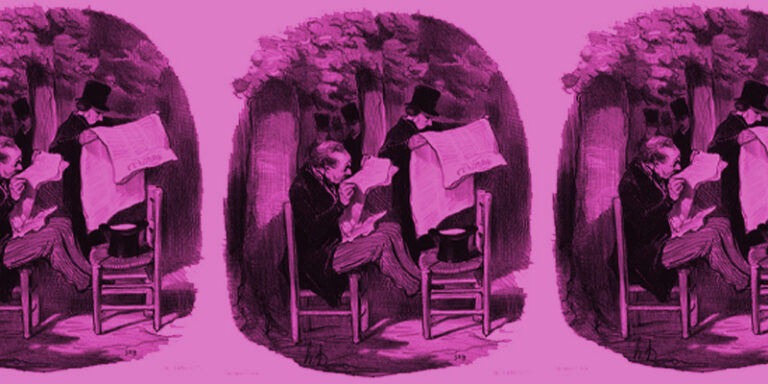
Right after college, I moved to San Francisco, a city where I knew one person. I had a lonely time at first, and in particular I struggled to stay connected to the friends I no longer shared a campus with. I wasn’t very good at calling people on the phone and my email correspondences were sporadic at best. But what I did have was my Reader Crew, a group of friends who were all devoted to Google Reader.
Some of you have already lit up at the mention of Google Reader—it’s got a devoted following of mourners. Reader was a short-lived aggregator of RSS feeds (RSS stands for “Really Simple Syndication”). Sites can publish RSS feeds which allow you to access that sites content in another program, called a reader, where you can scroll, sort, and search. These readers pull together any feeds you curate, keeping them updated and tracked. RSS feeds tend to be the posts and articles from a site—scroll down to the bottom of this page and you can see ours—but most RSS readers can also handle newsletters, Tumblrs, and even specific Google searches can rendered in RSS.
Google’s Reader was special because it had some very light social aspects: you were able to follow other people, who could share things from their own feeds into your feed, with or without a small bit of commentary. You could comment on or “like” these shares, but that was about it. There was no big public feed of everyone’s stuff, there was no push to discover other users, and there was no way to make content for Reader. It was just curation and light commentary, if you wanted it.
Molly White wrote a great piece recently for her newsletter that describes RSS aggregation as “curating your own newspaper,” and this was my Reader Crew’s experience. My feed felt like a magazine I was editing, with a small group of friends popping in to guest edit every now and then. It was small, pleasant, and slow.
We were pretty bereft when Google killed Reader, as were many other devotees. It’s hard to replace. Reader was similar to social media, where you can also curate what you’re reading, but without the massive public news feeds and the jockeying for attention. Reader’s more intimate size also felt a bit like a group chat, maybe, but less chaotic and ever-present.
Thankfully, we discovered The Old Reader, which aims to recreate the Google-axed experience and does it admirably well. If you miss Reader, it’s worth a look. But if you’re just starting out with RSS, don’t stress too much about which program to use. There are a lot of free and cheap options that others have aggregated—like Molly White’s from above. Really the question comes down to interface: what is pleasant for you to use and look at? But it’s easy to import and export your list of feeds, so you can always bop around if you want.
I really recommend giving RSS a try, especially if you’re tired of endless feeds that feel like constant, multidirectional fire hoses. I love RSS primarily because you can curate who and what you want to hear from. The pacing is self directed too, and never overwhelming. It feels like riding a bike: fast enough to get somewhere, but slow that the ride is enjoyable. And like reading, you control the frame rate, and can stop, slow down, or go back in your feed if you need to. Which is unlike the stationary bike of social media, where some red-pilled millionaire engineer is cranking a dial to make you peddle faster. Plus, you can get to the end of your RSS feeds, unlike a social scroll which is endless by design.
This scale and pacing issue seems to be part of why RSS never caught on with Silicon Valley business types. It’s a tech that was never flashy or engaging enough. David Pierce wrote an interesting deep dive for The Verge called “Who killed Google Reader?” that reveals how executives never got what was so special about Reader, and had it out for the product from the start. They saw it as “a humble feed aggregator built on boring technology” and “in meeting after meeting, they’d ask why Reader wasn’t just a tab in the Gmail app.”
It’s another reason to love RSS: seems like the tech lords hate it.
When you’re a businessman making dollar-sign eyes at things like Twitter and Facebook, you’re certainly going to be less horny about a product that is slower and less addicting. RSS lacks a stickiness that keeps you compelled to go back. It’s much closer to a tool, allowing you to create something unique and private, that is only as useful or enjoyable as you make it.
We need a new word other than “feed” to describe RSS. A “feed” is for molten metals extruded along an assembly line, or for bullets pumped into a machine gun. Maybe we should start calling the aggregation of RSS feeds “fields” or “pastures”: contained spaces where you can plant and harvest as you like, with no one butting in unless they’re invited.

